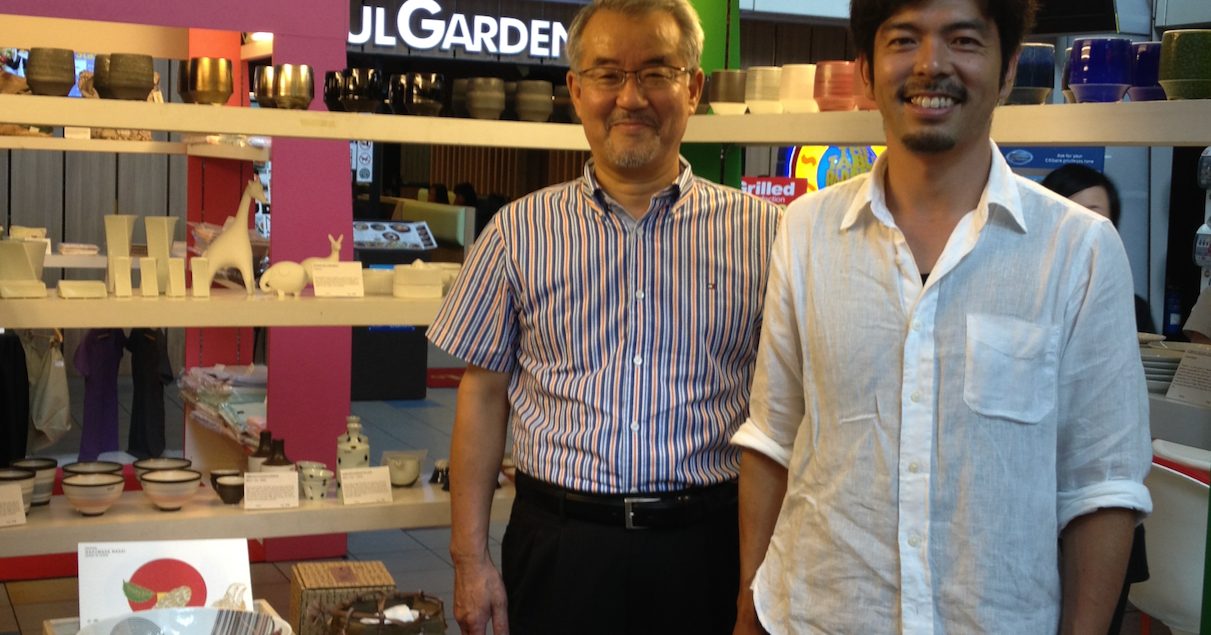The Beginning: Made-in-Japan Singapore Challenge
After founding KCmitF in 2012, one of the clients who had the courage to ask me to work with them was Kihara, despite my sparse track record at the time. Kihara is a Japanese trading company that specializes in porcelain from Arita and Hasami. It all started when Kihara participated in the “Made-in-Japan Singapore Challenge,” which was an initiative of enFactory, the company I used to work at before starting my own business.
Based in Arita, Saga, Kihara has been actively pursuing overseas expansion since the early 2000s. After gaining much experience, they were ready to take on the challenge of the Singapore market. Of course, their achievements in international business towered over to what I had done at the time. My proposal was to hold a joint pop-up exhibition in a local area in Singapore, working together with other exhibitors in order to lower costs. The goal was to receive feedback on the products not in the context of a commercial trade show, but directly from the end users themselves. (I will write about how this idea was born in this journal another time, but for now I would like to write more about what I learned from this event.)
The results of the event varied from exhibitor to exhibitor, but Kihara ended up with zero sales. The reason for this, as I later found out, was that the location was not a good fit. Even if the products are related to daily life, they will only sell well if they fit the needs of the customers in the area – regardless if they are made in Japan. It was quite obvious in retrospect, but Kihara and I were very disappointed at the time.
Taking into account the less-than-ideal situation, Kihara was scrambling to find potential business partners in Singapore. I was gathering information on what the obstacles were through talking with visitors, even those who did not purchase anything. During this time, I met Edwin, who had then just launched Supermama a little over a year ago. It was just a complete coincidence – apparently, he had just stopped by to kill time on the way home after picking up his kids from their lessons or something. In that sense, the location actually may have been perfect.
In my first conversation with Edwin, he asked us why we organized this event as well as why the porcelain was a bit cheaper than similar products available in Singapore. In the end, he mentioned that he also owned a store and then left for the day.
A few days later, we visited his store later and talked about everything from why we came to Singapore, Japanese craftsmanship, and our business mission. At that time, Supermama was just one of the candidates for the Singapore project, and I think we were still exploring other possibilities and planning the next phase.
After that, we decided to leave the products used at the event behind in Singapore. It was probably not a coincidence that shortly after returning to Japan, both Kihara and Edwin agreed that they wanted to try and sell the products at the new Supermama store. This became KCmitF’s first project as a coordinator, with the goal of bringing the two sides together. When you think about it though, it’s not easy – a stranger you meet for the first time, the distance across the ocean, the language barrier. All of this adds difficulty to business negotiations, which are already complex. It makes sense then that both sides start communicating with a sense of caution in the beginning.
On the other hand, you can see the other person’s true abilities and thoughts through continuous dialogue that you can’t see right away. What I learned from this coordination was exactly the change in the feelings of both parties that can be seen through repeated exchanges. I was fortunate enough to be able to realize that coordination is the process of identifying the best mutually-beneficial solution, navigating to a conclusion while maintaining enthusiasm on both sides, and supporting the realization of the idea. It was this formative experience that led me to where I am today.
Later on, all the products that weren’t sold at the pop-up sold out in one night. A few months after, the first collaboration product “Singapore Icons” was launched. At the end of that year, it won the “President’s Design Award” in Singapore, leading to a miraculous story that I will save for another day.
Company Information
-Online shopping business and gift business
-Expert matching business
-Project development contract business and community support business
-Human resource/organizational development support business
-Other Internet Service Business
Product development, OEM, wholesale, and sales of Arita-yaki and Hasami-yaki
Reference Links
en Factory Press Release
https://enfactory.co.jp/news/2012/08/09/000000
Design Information Site [JDN]: Aritayaki porcelain takes on the challenge of product development with overseas companies
Supermama x KIHARA “Singapore Icon” Project
https://www.japandesign.ne.jp/report/150527_supermama_kihara.html
Nihon Keizai Shimbun: The Ancient City of Ceramics
Taking on the World Jun. 6, 2018
https://www.nikkei.com/article/DGXMZO31305920S8A600C1962M00/
↑The video in the article sums it up very well.

